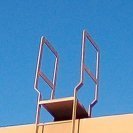-
Posts
38 -
Joined
-
Last visited
Profile Information
-
Location
New York
-
Favorite Area of Science
Mathematics & Physics
Recent Profile Visitors
2100 profile views
FragmentedCurve's Achievements

Quark (2/13)
6
Reputation
-
It's not unreasonable. You asking that is what made me curious about it's validity. As I said, what made me post this thread originally was contradictory anecdotes. Possibly the belief that technical books from the mid 1900s were smaller developed at a time in my life when I was frequently being exposed to larger technical books due to life events such as undergrad. This is why I agreed to actually answer your question. Now the question is, how do we figure out if the increase did occur? My view of you has improved a little. That is such an epistemological interpretation. What matters to me is, did someone measure this data and make it available in a usable form. It doesn't matter in this context, if it can be collected. I'm not willing to spend more than a couple weekends of coding and/or making empirical measurements. Early into this discussion I sent out emails to the Library of Congress and archive.org, asking the former for methods of uniquely identifying a book and the former for data. This is slightly unfair. @Peterkin's post was productive and brought up an important issue which would require further thought if this task is even worth doing. I have some experience with this because I worked on software for a bookstore that was responsible for automating the categorization of used books. The problem @Peterkin is getting is, if the scope of the dataset is restricted to some technical subject such as math books, we don't want to accidentally include layman books. Anyway, as an end result, would a table of each decade and it's mean and median dimensions be sufficient?
-
This thread is disappointing. If I've learned anything here, it's a thread about the value of anecdotal experience needs to be created. I'm going to wrap this up just for the sake of not leaving this thread hanging. First, I'll descibe what actually motivated me to post this which was initially avoided because I assumed it too verbose and unecessary . A common experience between me and my peers is that the size of technical books have increased. None of us have had hard evidence for it. It was just a common experience with the books we would read and were interested in. I had an hour to kill before I went to the airport and spent that time browsing a bookstore. While there, I looked through the computer books and noticed the publisher "No Starch" printed a copy of "Cyberjutsu: Cybersecurity for the Modern Ninja" that was smaller than their typical books. The experience of finding small books in math, computer science, and physics seems to be increasing. Some of the books even advertise the fact they're "smaller" in their preface. I doubt listing examples will be helpful... So, I made this thread, wondering why did the types of books I read get big; especially if authors are intentionally trying to publish smaller books. Obviously, all of this is anecdotal. I never tried to assert it was anything more than that. Some of you insisted I need to provide evidence that my premise, that newer technical books are larger than older books, is true. Maybe I should've defined "newer" and "older" so that the context would be clearer. You're pushing back against your imagination. You wanted hard evidence that the size of technical books has increased, I started thinking about how we could practically collect that data. I never said it can't be objectively answered. If you're looking for people that want to make you accept some belief or bias, go to a church or political rally and get off science forums. You would've been more productive if you asked for clarification on miscommunications or details that weren't clear. You've added nothing but distraction to the discussion. I think you have a screw lose. You bring up some important points, but I'm not in the mood to continue this at the moment. With respect to Schaum's and Dover, it's the same on my shelves. In fact, my copy of Naive Set Theory by Paul Halmos shrunk because Dover published a reprint which I bought. How and why do you know this?
- 66 replies
-
-1
-
The thought of getting it from publishers crossed my mind. I was thinking maybe there's a way to have the data come to us. If there's a way to uniquely identify a printed book, then crowds can submit data with all the data points that would allow us to uniquely identify the book they're measuring. If uniquely identifying printed books over the past century is impossibly, then as you said, anecdotal we'll remain.
-
Please don't assume details that weren't discussed. Obviously, huge amounts of data for the number of pages in books exist. You can easily scrape that from Google's book API, the Library of Congress API, Amazon, and many other sources. We didn't discuss what data points are worth collecting. The general question that's being asked is, have the (average) physical dimensions of technical books changed over time? There are many ways to look at this, right? We can break it down into different categories that might be worth looking at individually. Such cateogies might be, high school textbooks, undergrad textbooks, professional software engineering books, math & computer science monologues. This is totally ancedotal, but those categories feel like they have different characteristics. The obvious data points to collect are length, width, height, mass and page count (as you mentioned). Off the top of my head, I don't know of any source that provides those other data points.
-
Right. You're taking this way more seriously than me and now you're making me curious. I was originally going to say: I'm almost certain there's a bias in my collection of books, so if everyone added to the data, I was hoping to help soften that bias. I'm not claiming that we would be able to conclude something definitively from this nor would it be good data. But a collection of ancedotes can offer suggestions. But now I'm wondering, if we actually wanted a real answer to this question, does this data exist? If not, maybe we can passively collect enough data. This would probably be eaiser if we limit outselves to books that aren't older than the library of congress. The LCCN or ISBN combined with a print date will provide a unique identifer for a physical book. I'm thinking...
-
No, it's totally anecdotal. That's why I said "seem". I return home from vacation on Jan 5th. When I get back, I'll start measuring books from my personal library. I was thinking I can put up a spreadsheet on google docs or something so others can contribute their own data.
-
My original question was broader in scope than just high school or college textbooks. If we're restricting the discussion to high school and undergrad textbooks for the moment, it's easy to see that the increase in dimensions is not from us collectively learning more. Calculus has been calculus for a very long time. There's nothing new in an undergrad calculus textbook. The only difference I can find, is the introduction of calculators and the use of vectors in multi-variable calculus. (The older calculus textbooks didn't focus so much on vectors.) Most math books rarely need to be updated; despite this, their length and width seem to have increased.
-
One of the main reasons I use old books these days is because I'll get a different perspective. The presentation of and feeling for a subject changes over time. A student can learn whatever he needs to pass a test from a class textbook. But if a student wants to develop a deep intuition for a subject, it helps to see the difference in emphasis and techniques between then and now. I have no complaints about better diagrams, I just don't think the size of a page has to increase much for printing a better diagram.
-
My library consists of books ranging from around 1910 to today. Over the past 2 years I've slimmed down my library. I discarded many of my newer books (especially my computer books from around 2000 to 2010 and the 80s). However, I kept most of my older books because they're harder to replace. The older books I've discarded were ones I'll never reference again. When I was a teenager, I couldn't afford new books so I would go to used book stores to find math books. For example, I wanted/needed a copy of William Fellers' probability book but couldn't buy it new, but eventually found it for a couple dollars at "The Bruised Apple". Back then I use to literally walk 5 miles to browse through "The Bruised Apple" bookstore. I loved that place. Anyway, I ended up keeping the habit of studying subjects from old books in addition to using newer ones. So, I have a decent amount of old books, especially old math books.
-
I have enough from that time period to measure.
-
This doesn't make any sense. Those "cartoons" and "fun facts" were such an annoyance. Color pictures don't lead to larger pages and I haven't actually measured it but the font size doesn't seem larger in newer books. Plus, it's not just school textbooks, it's professional books in general such as UNIX programming books. I'm on vacation right now, when I return after the holidays, I'll measure some of the books I own. That'll give me something more concrete to talk about.
-
Something that doesn't make sense to me is the size of textbooks and technical books. If you look at technical books from the mid-1900s, they were human friendly sizes. For example, the 2nd edition of University Physics by Sears & Zemansky which was published in the 1950s is split into 2 volumes and it's lighter and smaller than the modern editions. (However, the content remains mostly the same.) Unlike it's modern version, it was clearly meant to be held by a human. Any speculations on why this trend occurred?
-
FragmentedCurve started following What is mathematics?
-
I don't really know how to answer your questions because they don't really make sense. From what I can gather, the important thing is you want [math]x>q[/math]. Below I give your conjecture with a simpler function that has the same property along with a proof. Conjecture Given the function [math]f(x)=\frac{x^2}{N}[/math], if N=pq is a semiprime and p>q , then p>x>q when f(x)=1 . Proof [math]1=\frac{x^2}{N} \implies \sqrt{N}=x[/math] Given that p>q , then [math]p^2>N>q^2 \implies p>\sqrt{N}>q \therefore p>x>q[/math].
-
I'm coming to this thread late and trying to make sense of it. @Trurl, your writing style is difficult to parse. You should also learn [math]\LaTeX[/math] which will make it easier for others to read your math. @Trurl correct me if I'm wrong about your work and motivation. This is what I understand you're trying to do. The motivation is to find a method of approximating the smaller prime factor of a semi-prime. So, if [math]N[/math] is a semi-prime and [math]p[/math] and [math]q[/math] are primes such that [math]q<p[/math] and [math]N=pq[/math], then you want a function [math]f(x)[/math] such that there exists a point [math](n, f(n))[/math] where [math]f(n) \approx q[/math]. And the reason you want such a function is so if [math]n[/math] is known or easy to find, then you limit the search space to find [math]q[/math] and you also approximately know the lower bound for [math]p[/math] because it must be greater than [math]q[/math]. I don't think he gets the number 3, it's a counter example.
-

Using software simulations as a substitute for labs
FragmentedCurve replied to FragmentedCurve's topic in Physics
This was actually very helpful. It lead me to some real world examples I can look at.




